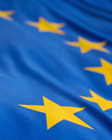LIBOR Scandal: European Commission Steps in to Fight Future Rate-Fixing
Part of the outrage over the LIBOR scandal stems from the (so far) meagre actions taken by regulators in punishing the manipulators of these interest rates, along with the feeling among investors that the regulators were indifferent, even complicit, over this act of malpractice.
This begs the question, why has so little been done by regulators to date? One possible reason, at the time at least, was the prevailing market circumstances. When rumours of artificial LIBOR quotes first surfaced in the spring of 2008, the financial system was teetering on the precipice of systemic collapse. Although it is far from clear whether there was a conscious effort by regulators to keep quiet on this issue in the name of “financial stability”, there is absolutely no doubt that central bankers knew something was afoot.
The below passage is a quote from the Bank for International Settlements’ June 2008 Quarterly Review (p.20):
“Adding to the tense situation in interbank markets, the reliability of the Libor fixing mechanism, in particular for US dollar loans, was increasingly questioned by market participants. Suspicions were voiced to the effect that some banks in the Libor panel had been reporting rates lower than their actual borrowing costs. It was alleged that they did so in order to hide their true demand for dollar funds, and hence to appear less vulnerable than they actually were. As the media focused on the issue and the British Bankers’ Association began investigating in mid-April, US dollar Libor rates suddenly adjusted upwards by 15–40 basis points.”
Galling, to say the least. So why, then, has it taken four years for action to be taken? Part of the reason given is that it has been a complex, multi-jurisdictional investigation. But the real Achilles heel, as we have blogged about before, is that LIBOR operates in a regulatory “no man’s land.” The daily fixings are carried out under the auspices of the British Bankers Association, the trade body, but are outside of the scope of UK and EU market abuse rules.
Coincidentally, the EU’s Market Abuse Directive and Regulation are currently under review in the European Parliament, following the publication of draft legislation last October to update the framework. Last week, EU Internal Market Commissioner Michel Barnier and Justice Commissioner Viviane Reding released a joint statement proposing to amend the draft market abuse rules under political negotiation. The amendments expand the scope of the regulation to cover benchmarks, amend the definition of market manipulation to capture manipulation of benchmarks, and make such manipulation a criminal offence for both national benchmarks such as LIBOR, as well as European equivalents such as EURIBOR.
Whilst this step may help to prevent future offences, it does not provide much comfort to investors and others caught up in this mess. Indeed, with investigations of several more banks still ongoing, the current debacle has yet to run its course.
Do the Commission’s actions fall short of the mark of what is required to restore trust? Or does the blame reside squarely with an industry that has failed to get its own house in order over LIBOR in the absence of regulatory oversight? Tell us what you think.
If you liked this post, consider subscribing to Market Integrity Insights.


Very useful article about LIBOR.
Surly some of this is related to the +/- $725 trillion of OTC derivatives in the system? Very tempting to manipulate your costs! Michael
Very interesting. If regulation is not enough, how, as investors, can protect ourselves from this manipulations?
Thanks for the comments. While better regulation is needed, it will never eliminate market manipulation, which is why it is so important for organizations to embed a culture of ethical behaviour.